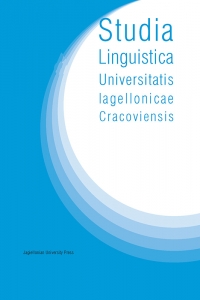DIMINUTIVITY AND EVALUATION IN COURTROOM INTERACTION: PATTERNS WITH LITTLE (PART 1)
DIMINUTIVITY AND EVALUATION IN COURTROOM INTERACTION: PATTERNS WITH LITTLE (PART 1)
Author(s): Magdalena SzczyrbakSubject(s): Theoretical Linguistics, Applied Linguistics
Published by: Wydawnictwo Uniwersytetu Jagiellońskiego
Keywords: courtroom talk; diminutivity; diminutives; evaluation; stance
Summary/Abstract: This article presents the results of a corpus-assisted discourse study into the use of the diminutive marker little in an adversarial trial. It explores the recurrent patterns and the evaluative meanings associated with the use of little, and furthermore looks at the broader interactional context in which these patterns and meanings are found. Drawing on the concepts of stance (du Bois 2007), evaluation (Hunston 1994) and semantic prosody (Louw 1993), it demonstrates how interactants in the courtroom setting lay claim to epistemic priority by stressing the relevance of their own testimony while discrediting the opponent and diminishing the importance of unwanted evidence. The analysis also shows that patterns with little are linked to politeness and mitigation, and that they soften the austerity of communication. The data seem to suggest as well that the evaluative uses of little are more common in references to the primary reality of the courtroom than in references to the out-of-the-courtroom reality, in the case of which denotative meanings prevail. Most importantly, however, the study reveals that despite the formality of courtroom interaction, analytic diminutives with little are a frequent interactional device and, further, that their polarities depend on interplay with other discourse elements as well as the interpersonal goals that the speakers are trying to achieve.
Journal: Studia Linguistica Universitatis Iagellonicae Cracoviensis
- Issue Year: 135/2018
- Issue No: 1
- Page Range: 59-68
- Page Count: 10
- Language: English

